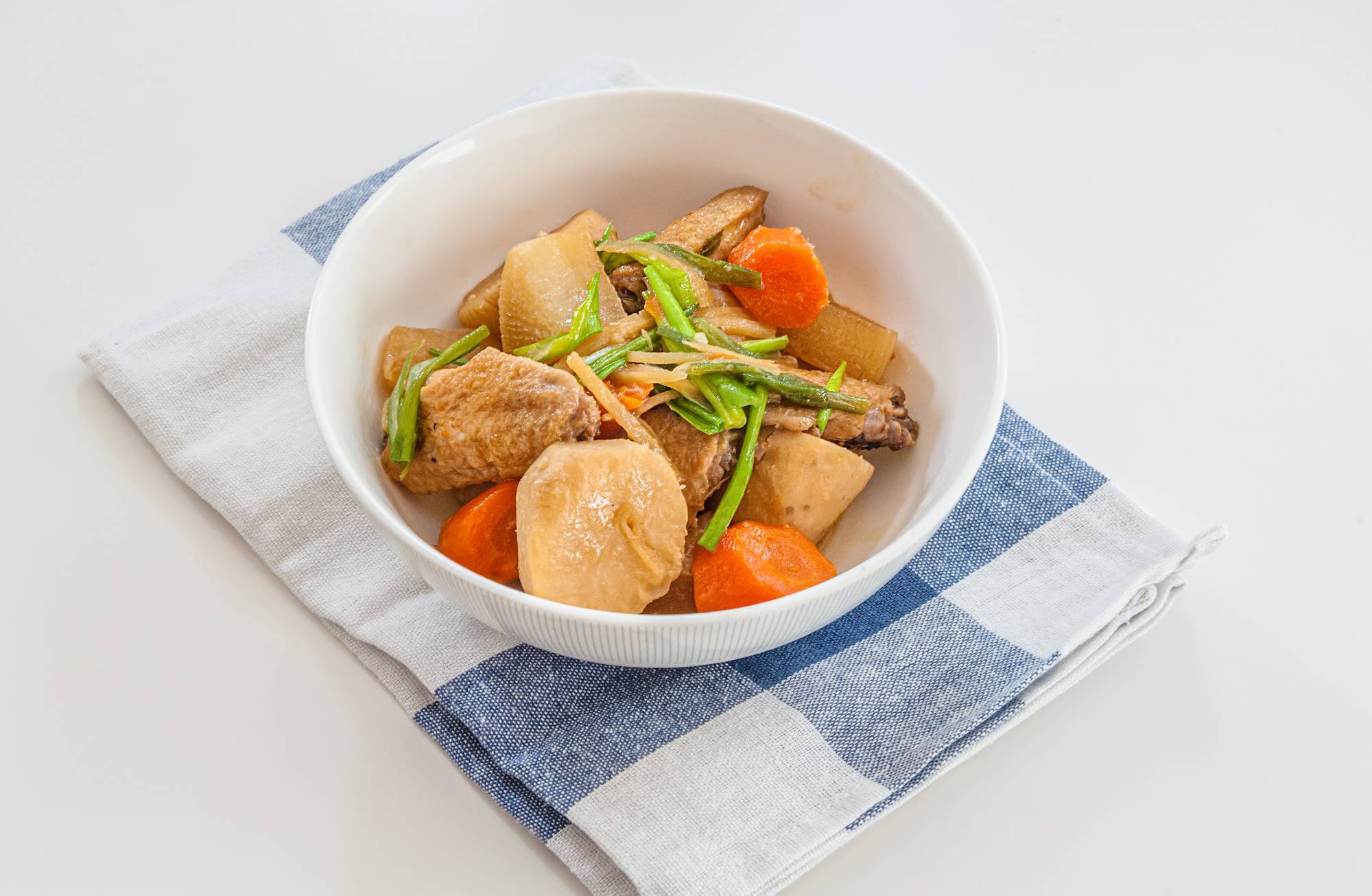The word imo is used in Japanese for many starchy root vegetables. There's jagaimo (potato) and satsumaimo (sweet potato), both fairly recent additions to Japan’s diet, as well as its language. There's also the yamaimo (mountain yam). But possibly the most familiar imo of them all is the satoimo (taro). The name satoimo means "village” or “homestead” imo, since it has been grown near villages (as opposed to the yamaimo, which was gathered in hilly areas) for millennia.
The taro originates in South or Southeast Asia, and is thought to have been introduced to Japan toward the end of the prehistoric Jomon Period (10,000-200 B.C.). It quickly adapted itself to the climate, and became a valuable staple food way before rice — or grain farming in general — was introduced. Although the zuiki (taro leaf stems) are eaten too, the corms are the main source of food.
Even after rice became commonly grown in Japan, it remained a food for the wealthy for a long time. Even in the comparatively recent Edo Period (1603-1868), the farmers who grew rice had to hand most of it in as nengu (land taxes), leaving little to none for themselves. So they grew other grains such as millet, as well as the satoimo, for their own consumption. From the 18th century onward, satsumaimo also became an essential staple on the mainland (it had already been present in the Ryukyu Kingdom, present-day Okinawa, for about a century). These days, it is grown all over the country with the exception of Hokkaido. The top producing prefectures in 2018 were Saitama, Chiba and Miyazaki. Specific type of taro are called other names besides satoimo: A type with a thin tapered shape grown in the Kyoto area is called ebi-imo (“shrimp imo”); another variety that is formed by several corms growing together to form one mass is called a yatsugashira ("eight heads").


















With your current subscription plan you can comment on stories. However, before writing your first comment, please create a display name in the Profile section of your subscriber account page.